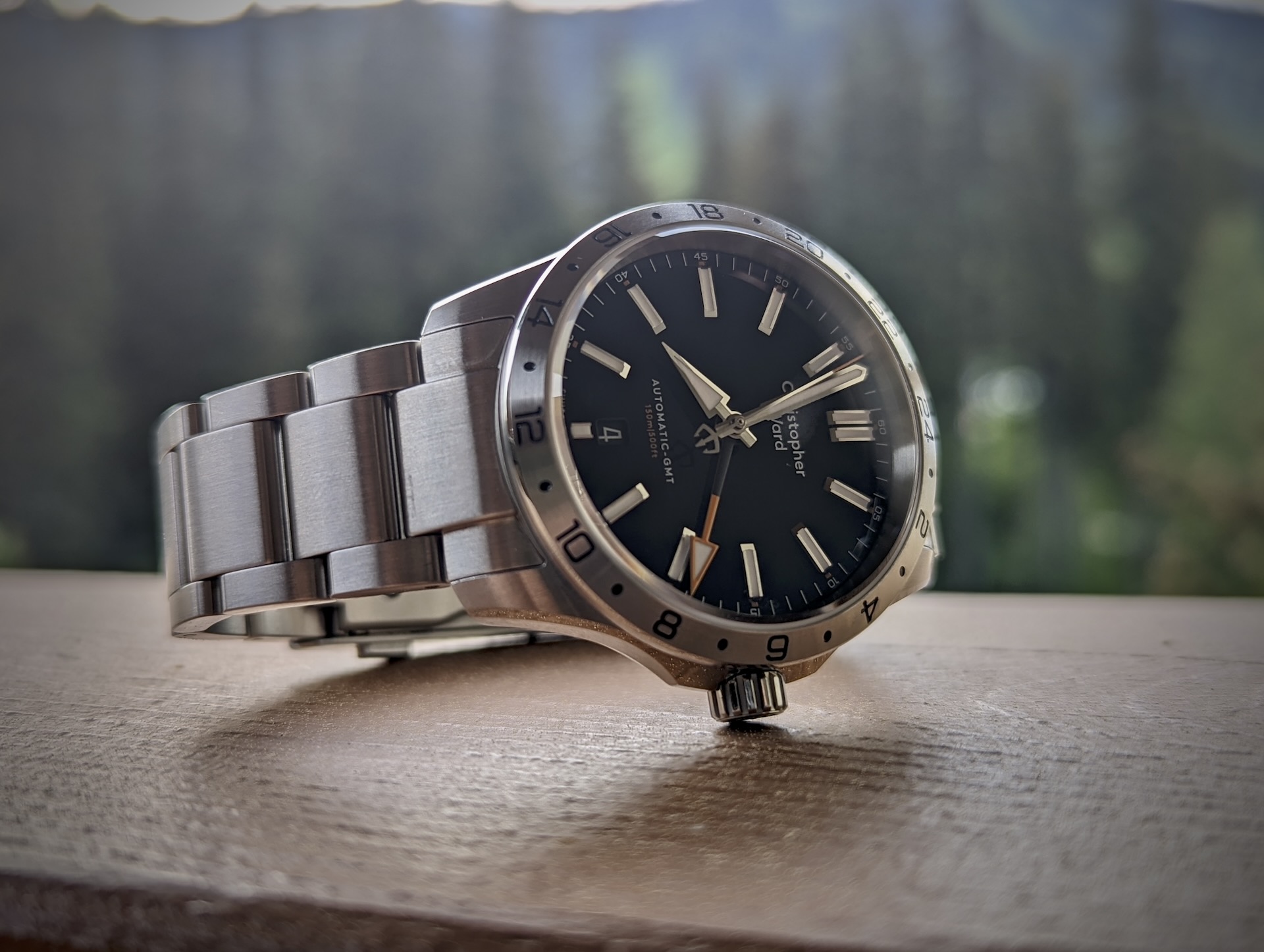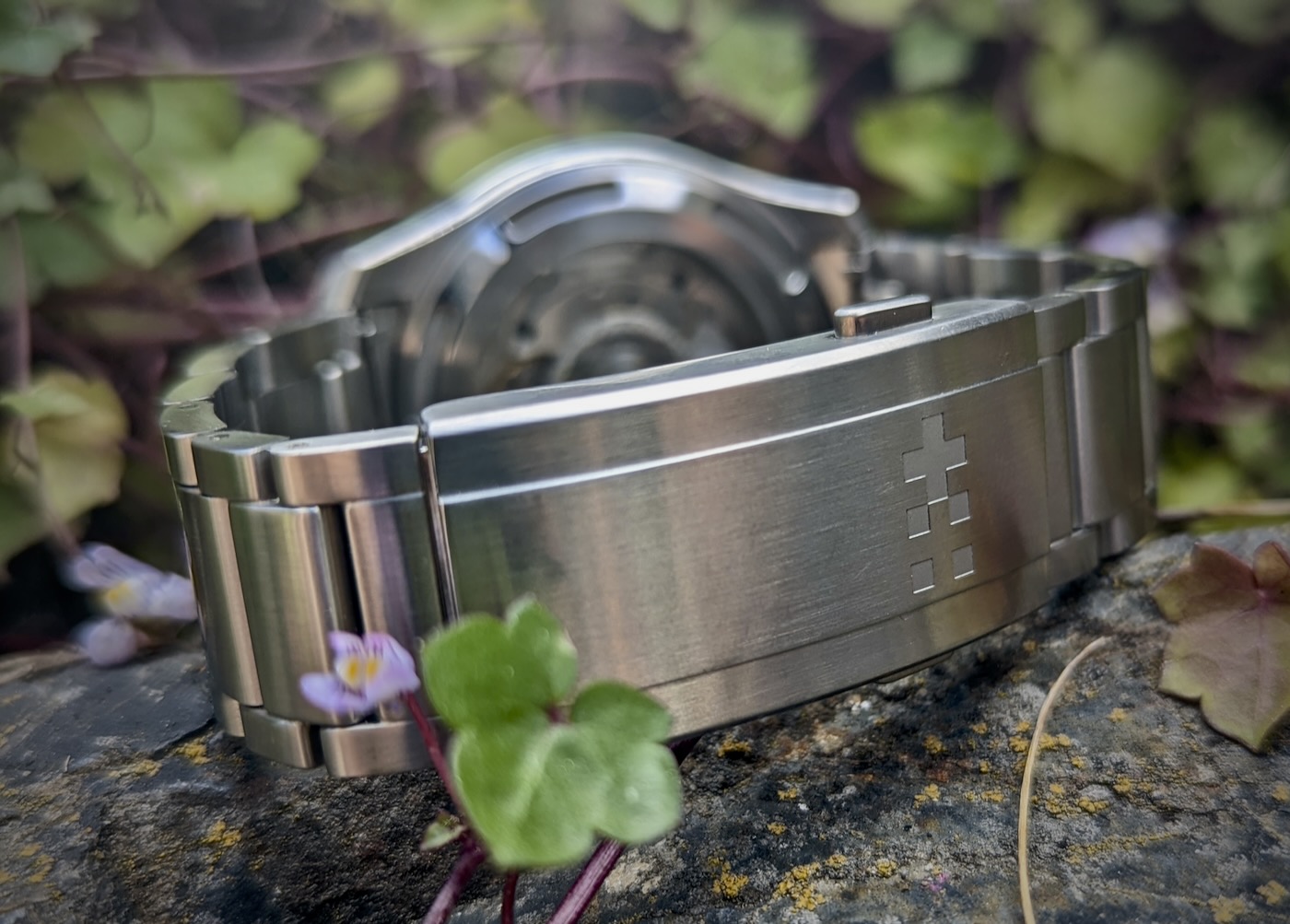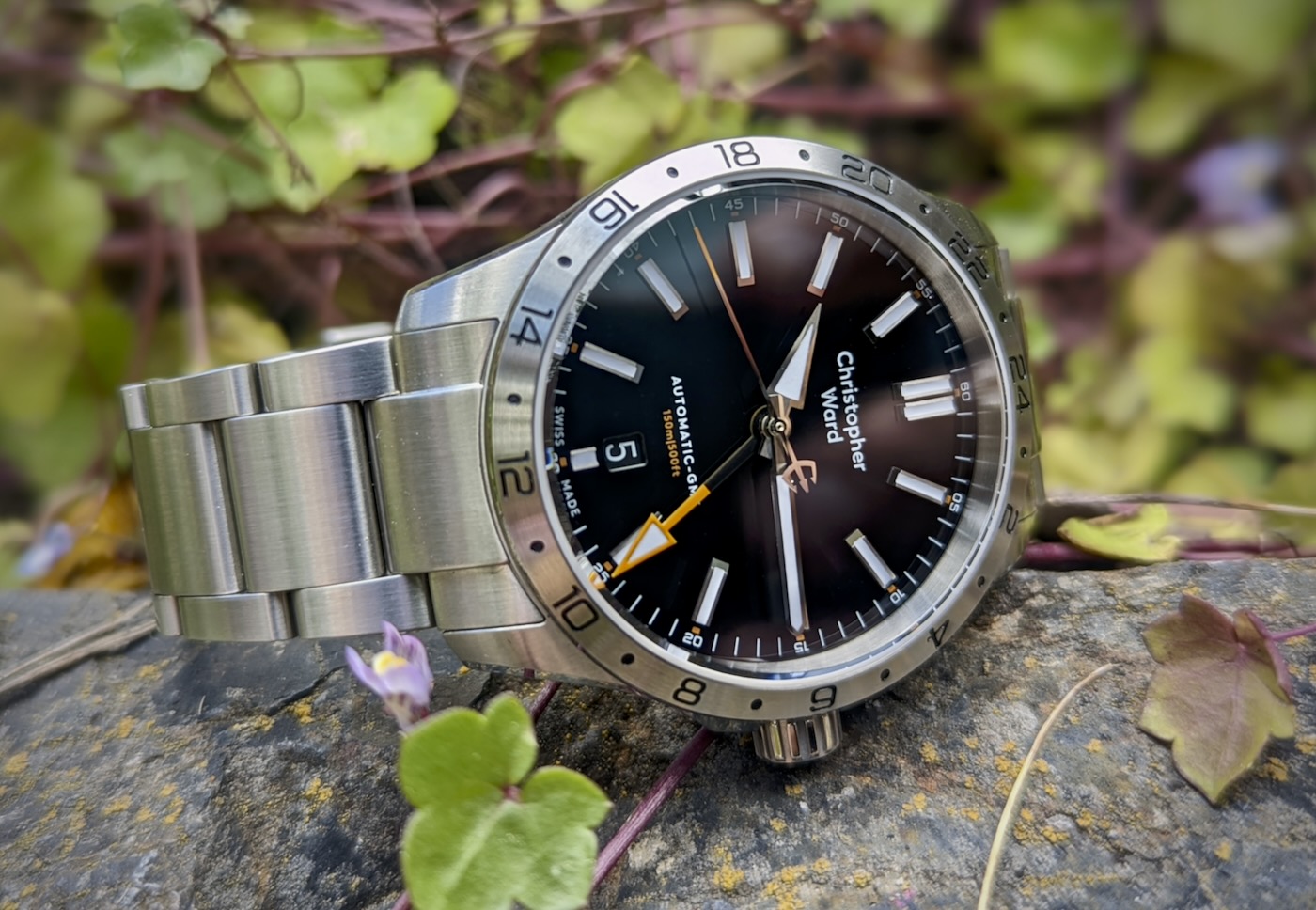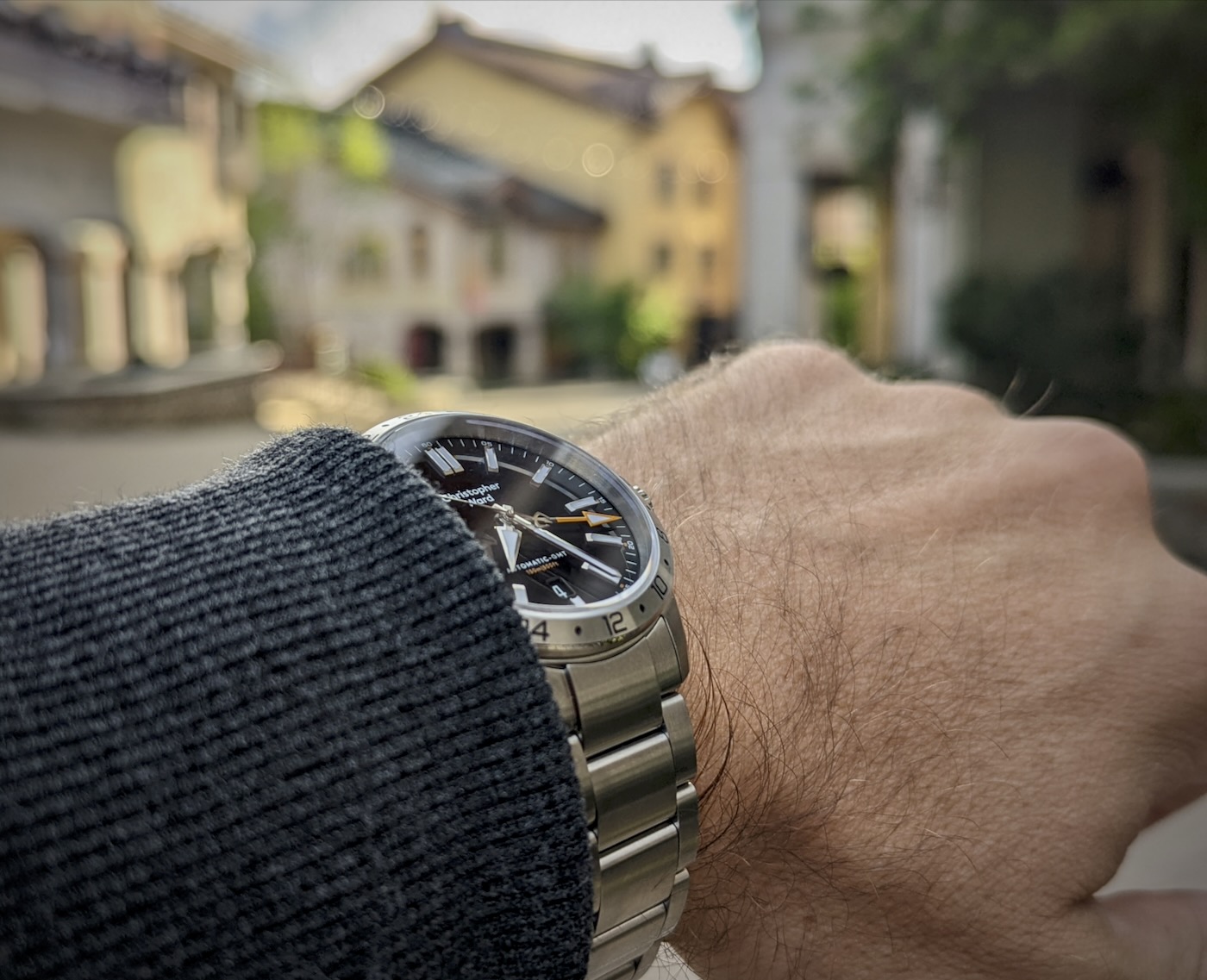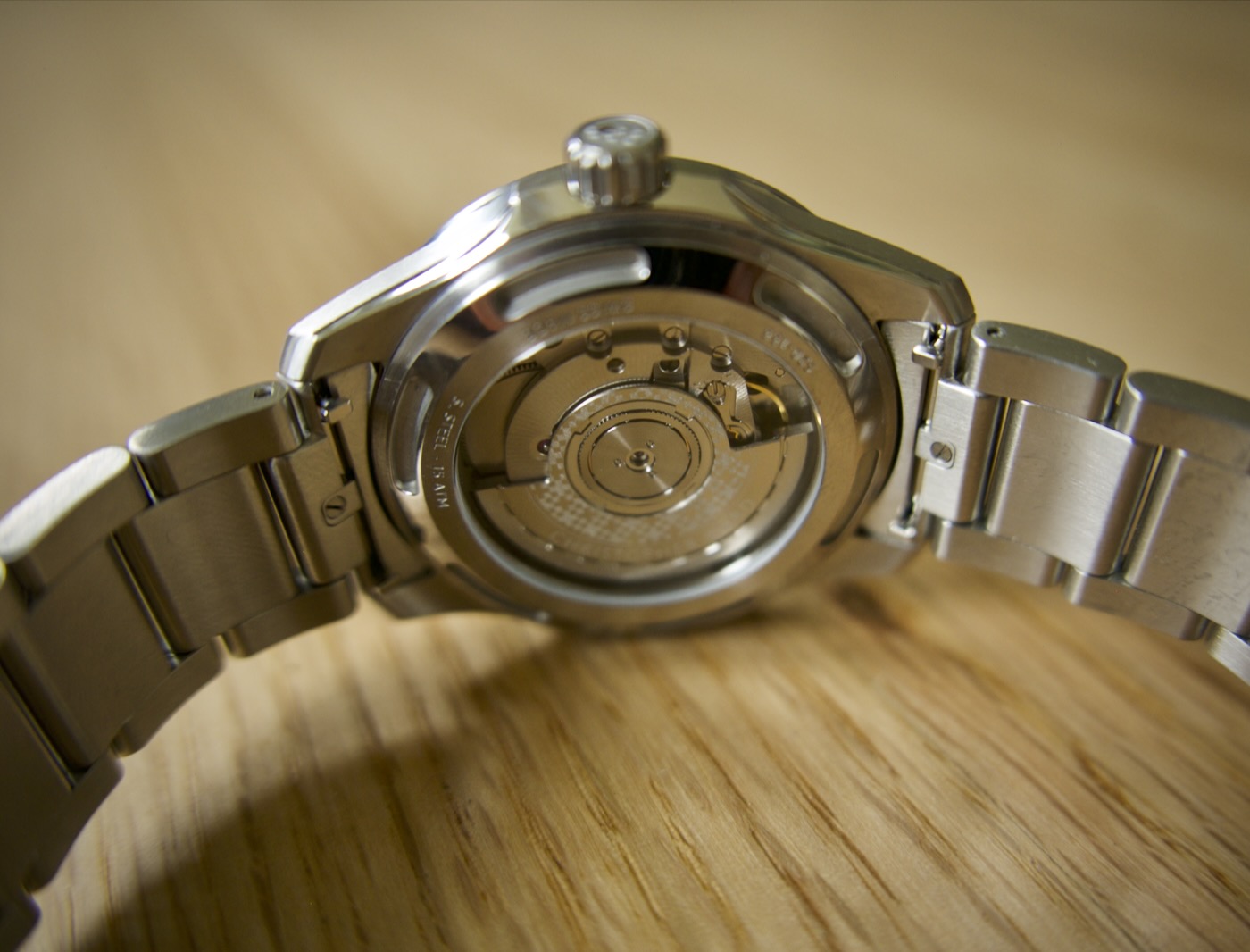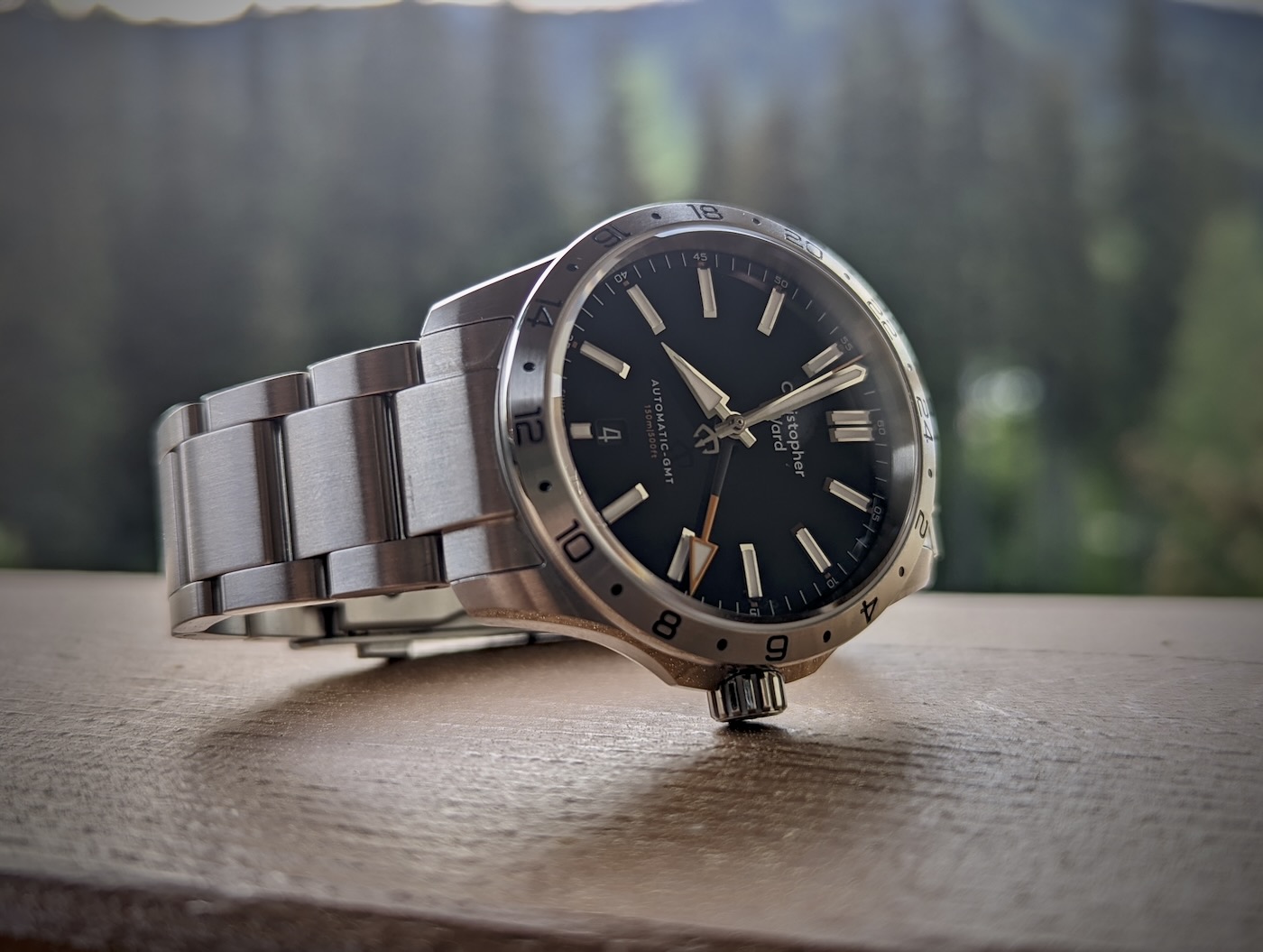 It’s easy to produce a watch that ticks all the boxes for in-demand specs: Goldilocks sizing, sapphire crystal, reliable movement, high water resistance, tool-free micro-adjustment on the clasp, etc. What’s harder to pull off is a watch that ticks those boxes while at the same time offering a cohesive, thoughtful design combined with excellent fit and finish. In releasing the C63 Sealander GMT, Christopher Ward has done just that with an attractive, versatile, and easy-wearing GMT watch. Better yet, it has done so at an extremely attractive price point.
It’s easy to produce a watch that ticks all the boxes for in-demand specs: Goldilocks sizing, sapphire crystal, reliable movement, high water resistance, tool-free micro-adjustment on the clasp, etc. What’s harder to pull off is a watch that ticks those boxes while at the same time offering a cohesive, thoughtful design combined with excellent fit and finish. In releasing the C63 Sealander GMT, Christopher Ward has done just that with an attractive, versatile, and easy-wearing GMT watch. Better yet, it has done so at an extremely attractive price point.
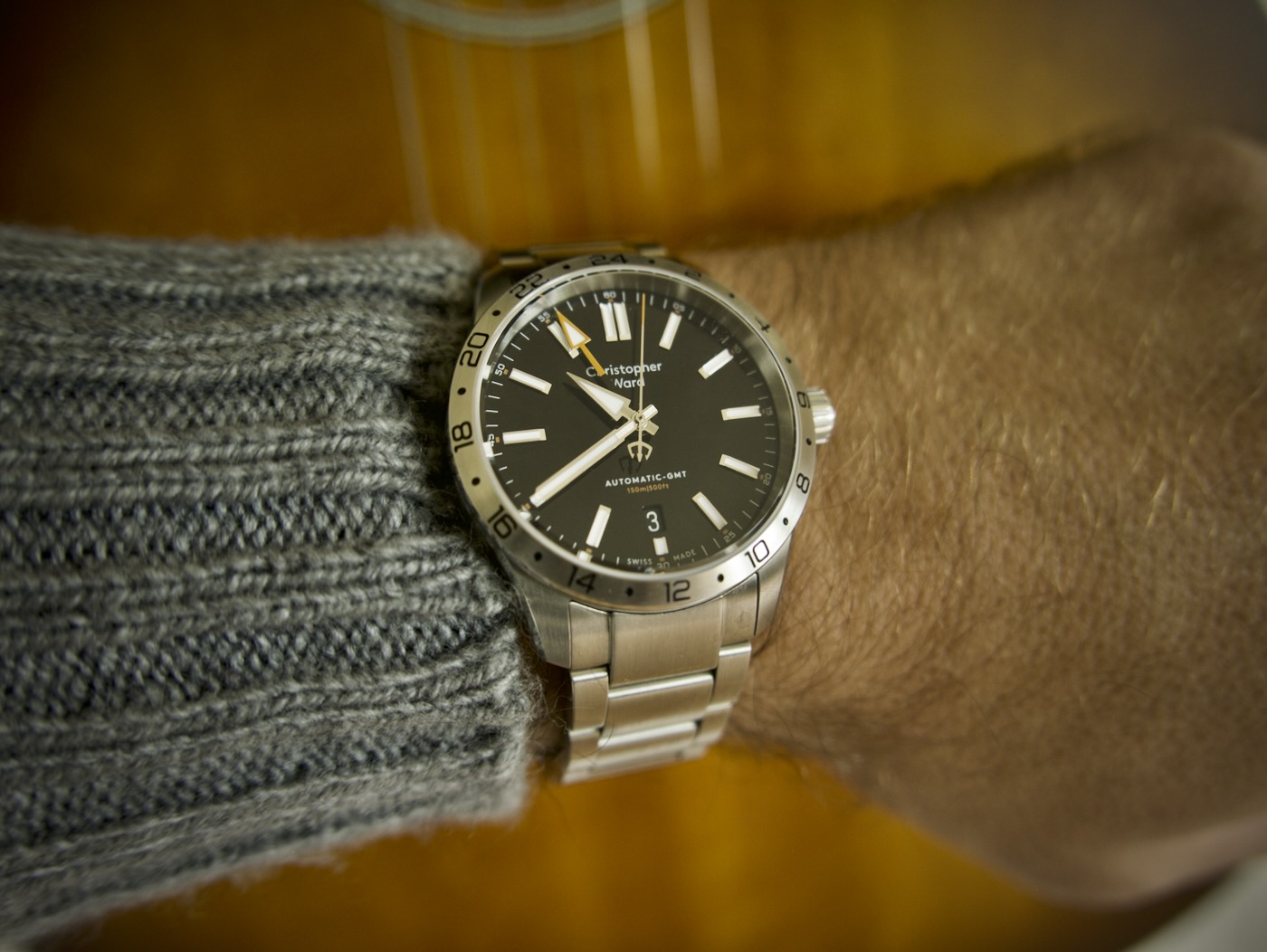
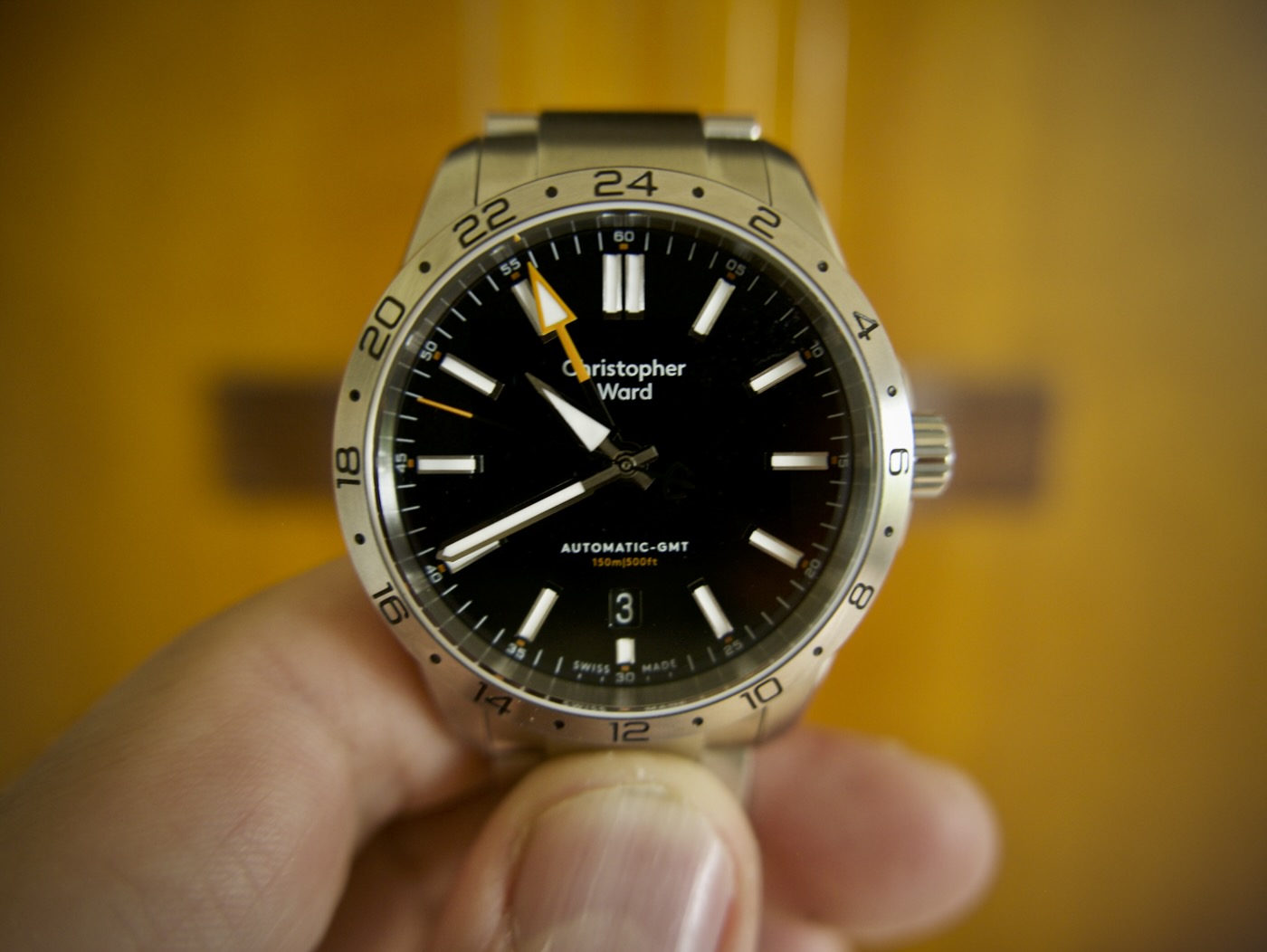 Let’s address the looming pachyderm in the room right off the bat: Yes, the Sealander GMT has a Rolex Explorer II vibe. The 24-hour fixed stainless steel bezel and orange GMT hand clearly evoke the now-classic Explorer watch. Given how many brands have fixed bezel GMTs, and the fact that orange simply works as an accent color, it’s probably better to think of it as a general “explorer style” at this point. Regardless, the Sealander GMT has more than enough design elements to set it apart from the crowd and well away from “homage” territory.
Let’s address the looming pachyderm in the room right off the bat: Yes, the Sealander GMT has a Rolex Explorer II vibe. The 24-hour fixed stainless steel bezel and orange GMT hand clearly evoke the now-classic Explorer watch. Given how many brands have fixed bezel GMTs, and the fact that orange simply works as an accent color, it’s probably better to think of it as a general “explorer style” at this point. Regardless, the Sealander GMT has more than enough design elements to set it apart from the crowd and well away from “homage” territory.
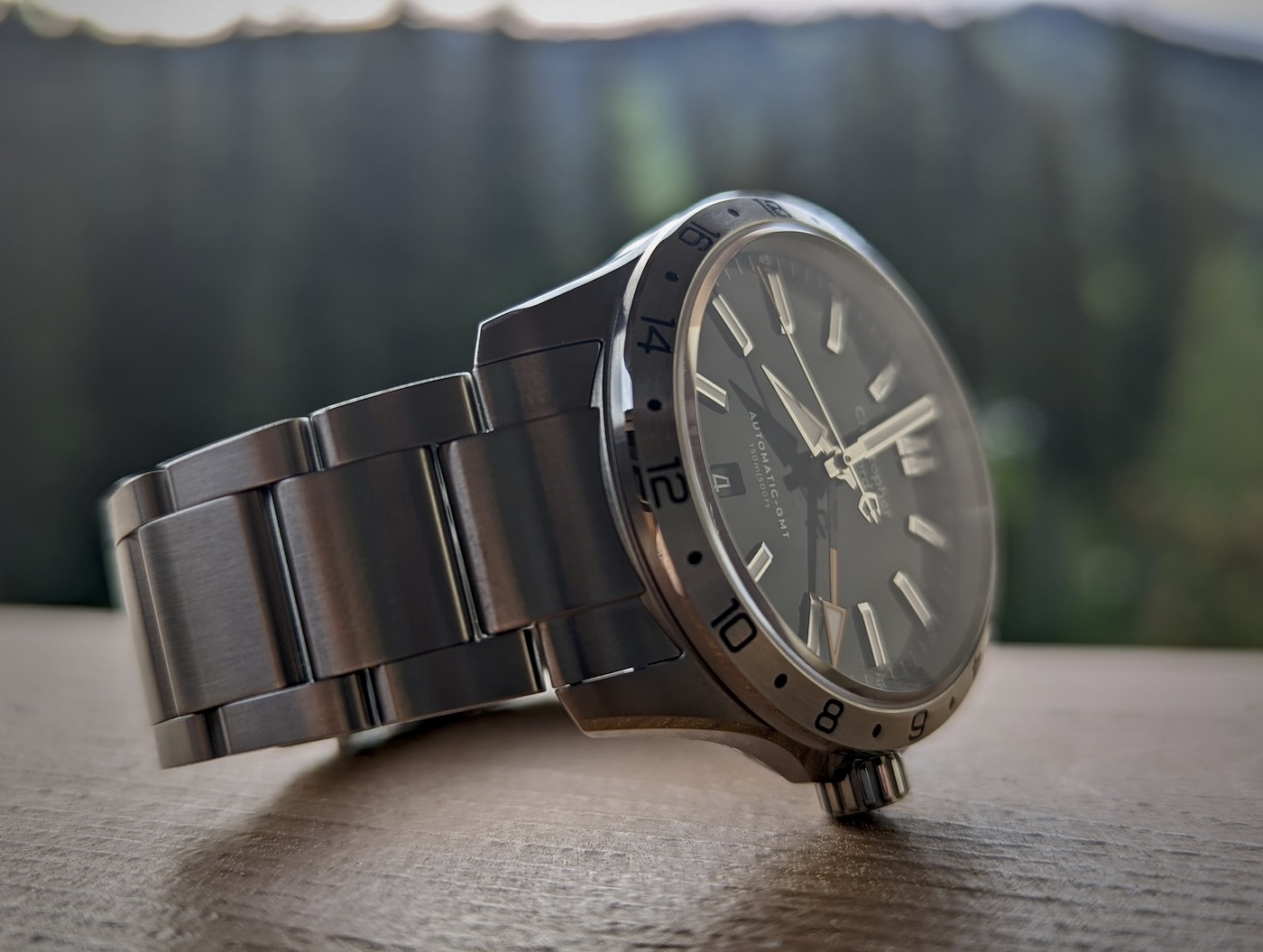
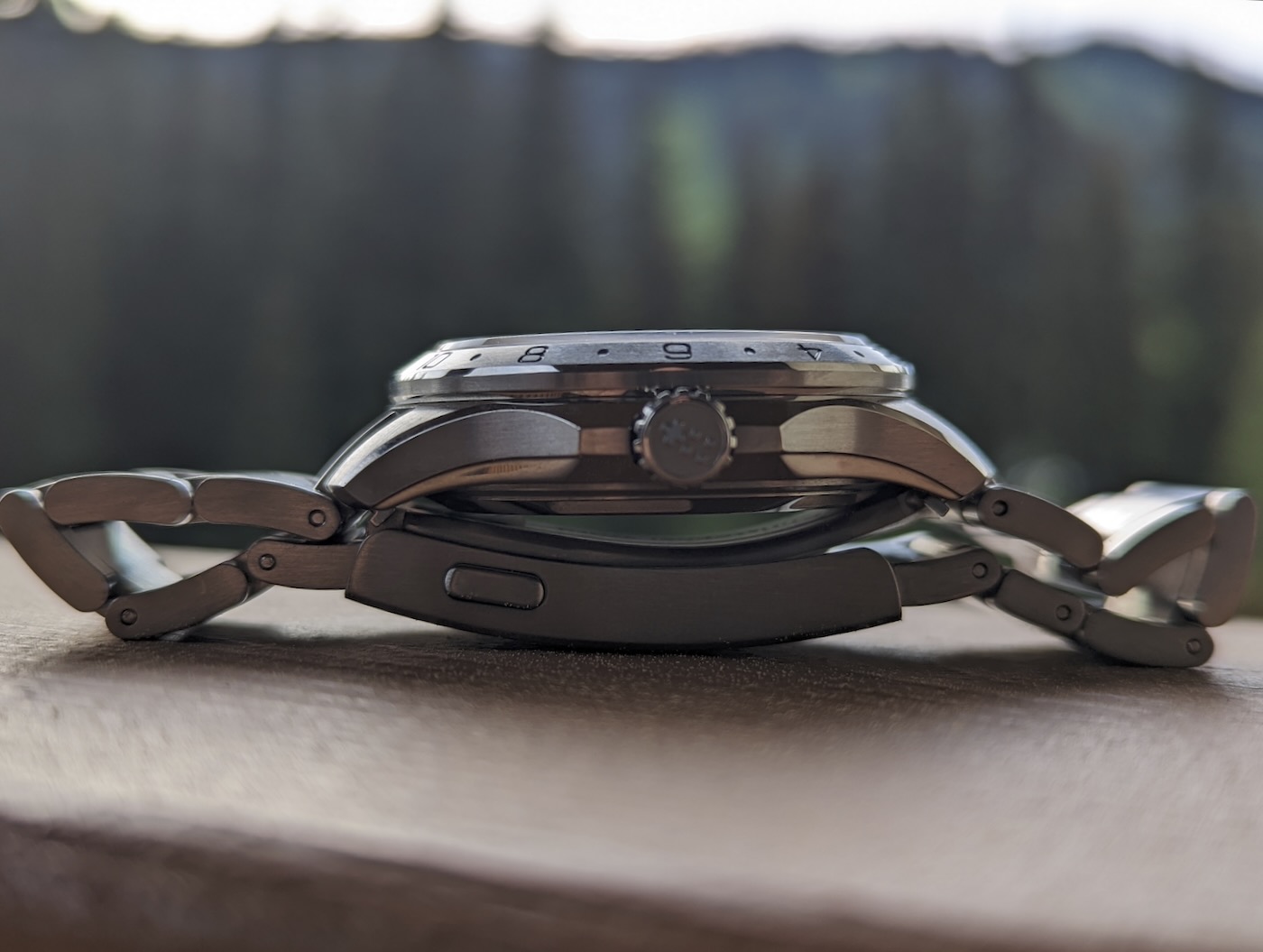 The Sealander GMT is available in three dial colors: black, white, and textured green. Each has its own unique look and feel, but the black dial, reviewed here, is arguably the most versatile of the bunch. Regardless, each colorway comes with applied baton markers filled with X1 Super-LumiNova. Similarly, the hour, minute, and tip of the GMT hand are all luminous. The handset Christopher Ward chose for the Sealander GMT is one that can be found across the C63 range and is comprised of a simple baton minute hand, a broad-arrow hour hand, and an orange-tipped seconds hand with a trident counterweight. Since this is the GMT model, you also get an orange-tipped 24-hour hand. The handset complements the dial. Although the hour hand and trident won’t be for everyone, they’re elements that tend to be exaggerated in photos, but are hardly noticeable on the wrist. The use of orange as an accent color is prominent, but not overdone. The 24-hour hand is the major orange element, but that plays nicely off the tip of the seconds hand, a bit of text on the dial, and small markers along the minute track.
The Sealander GMT is available in three dial colors: black, white, and textured green. Each has its own unique look and feel, but the black dial, reviewed here, is arguably the most versatile of the bunch. Regardless, each colorway comes with applied baton markers filled with X1 Super-LumiNova. Similarly, the hour, minute, and tip of the GMT hand are all luminous. The handset Christopher Ward chose for the Sealander GMT is one that can be found across the C63 range and is comprised of a simple baton minute hand, a broad-arrow hour hand, and an orange-tipped seconds hand with a trident counterweight. Since this is the GMT model, you also get an orange-tipped 24-hour hand. The handset complements the dial. Although the hour hand and trident won’t be for everyone, they’re elements that tend to be exaggerated in photos, but are hardly noticeable on the wrist. The use of orange as an accent color is prominent, but not overdone. The 24-hour hand is the major orange element, but that plays nicely off the tip of the seconds hand, a bit of text on the dial, and small markers along the minute track.
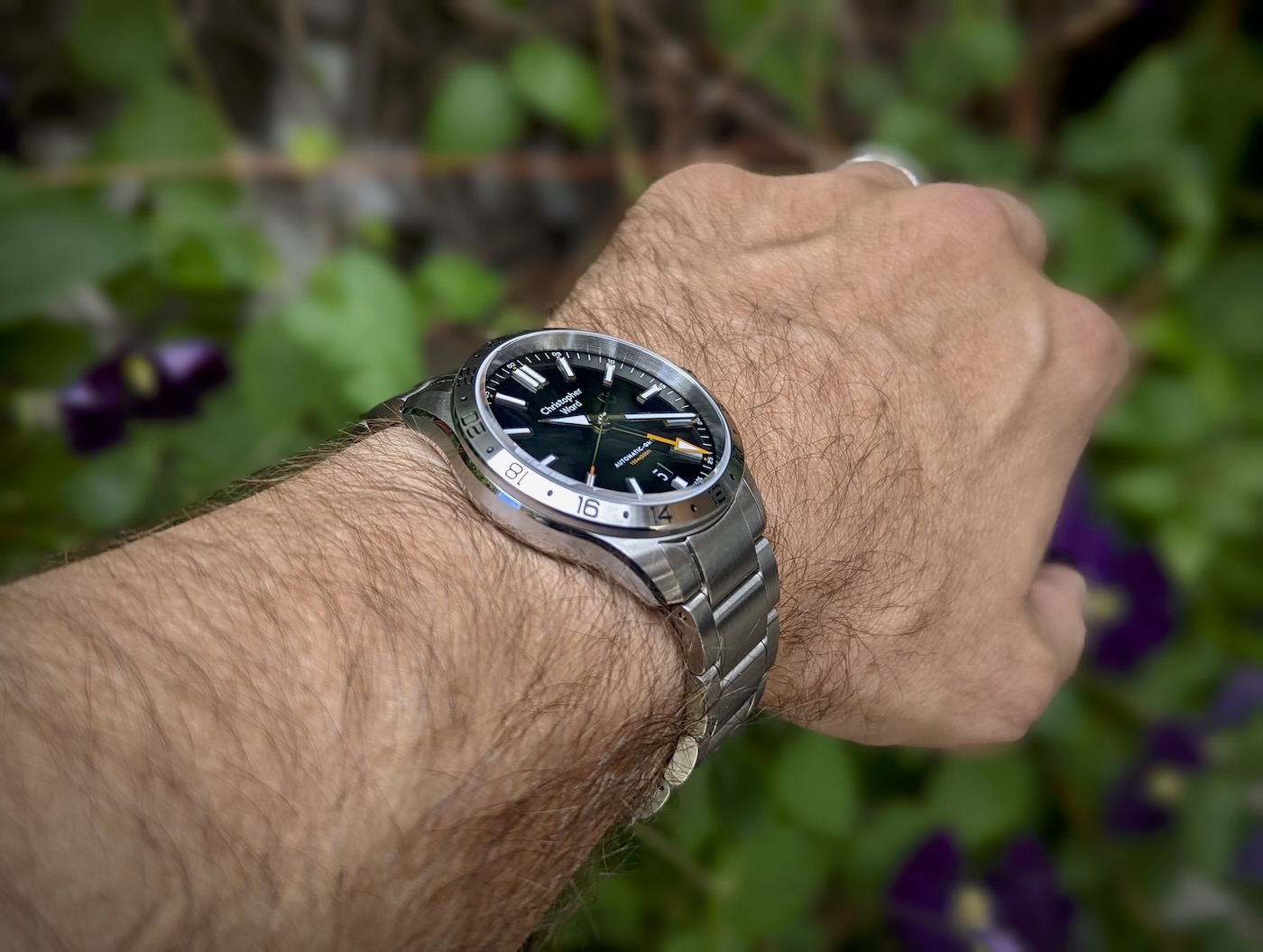
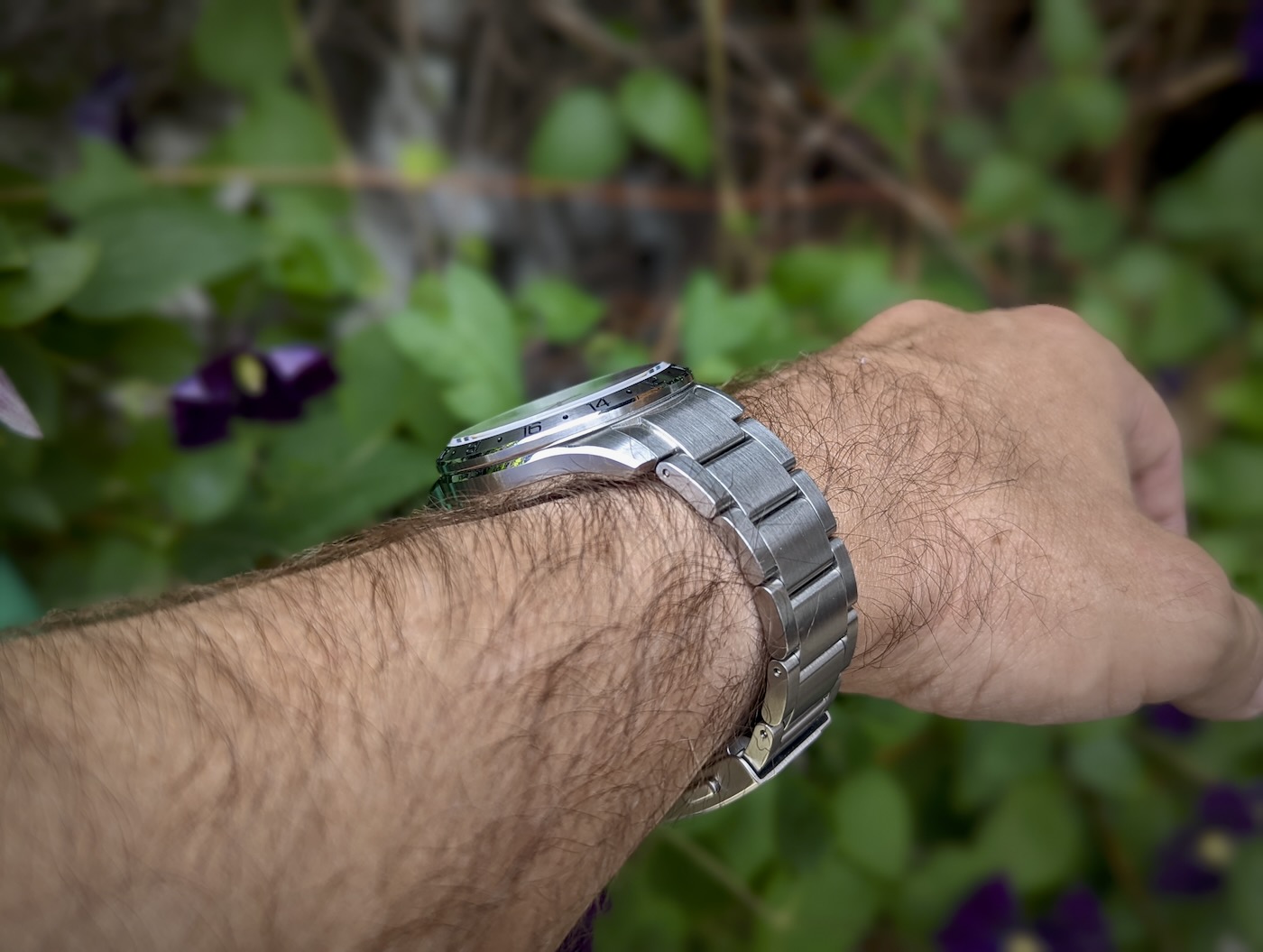 Christopher Ward keeps the branding to a minimum, only displaying the brand name at 12 o’clock and some basic info above the color-matched date at 6 o’clock. If you’ve followed Christopher Ward, you’ll know that sorting out their branding has been something of a journey, but the single sans serif brand name is simple and clean and works well here. That said, you will find their twin flag (England and Switzerland) logo on the rotor, crown, and bracelet clasp.
Christopher Ward keeps the branding to a minimum, only displaying the brand name at 12 o’clock and some basic info above the color-matched date at 6 o’clock. If you’ve followed Christopher Ward, you’ll know that sorting out their branding has been something of a journey, but the single sans serif brand name is simple and clean and works well here. That said, you will find their twin flag (England and Switzerland) logo on the rotor, crown, and bracelet clasp.
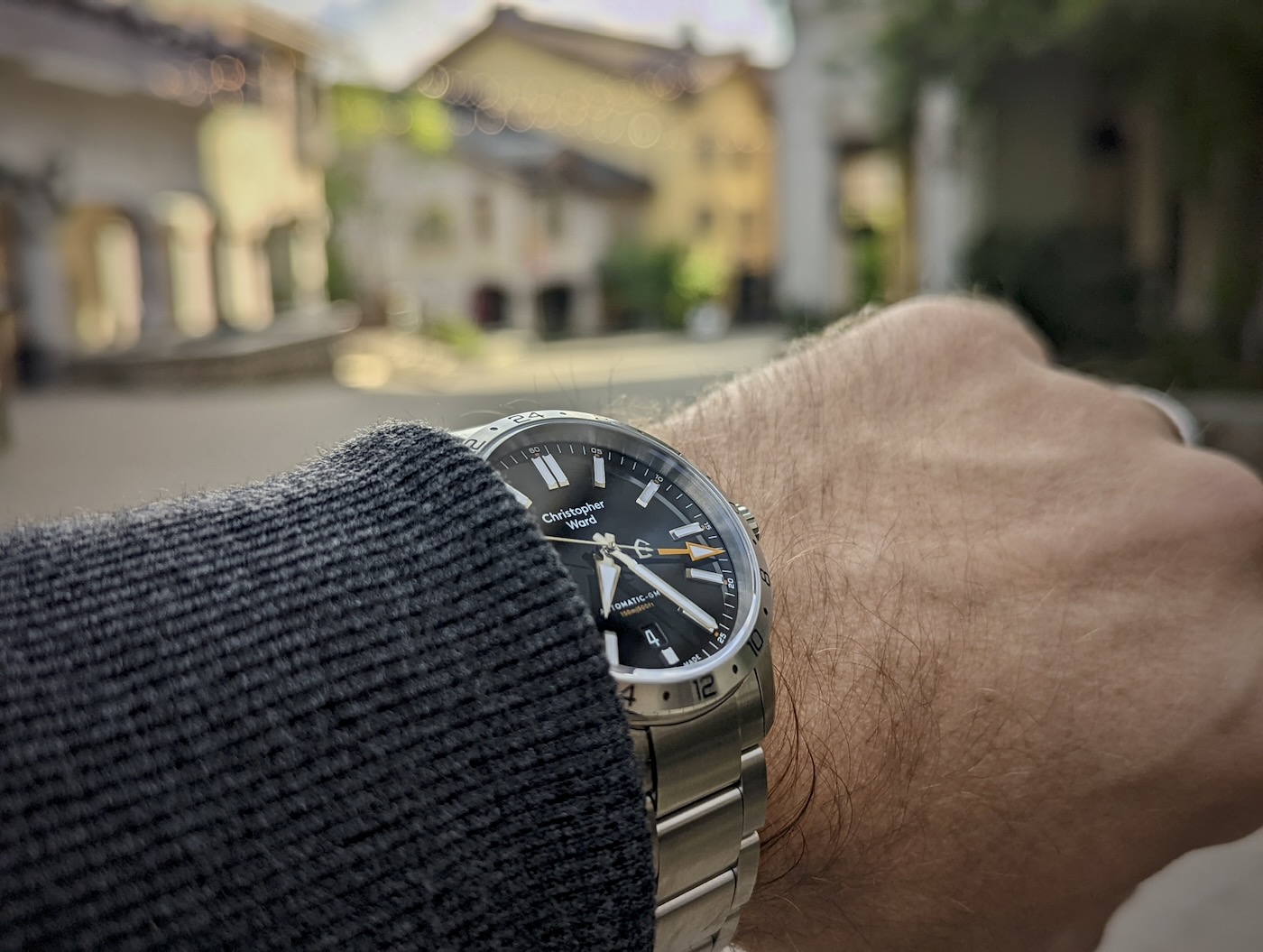
On the wrist, it’s clear that Christopher Ward has prioritized the wearing experience. The 39mm case diameter, paired with short (45.8mm), sloping lugs, and a slim (11.85mm) case make the Sealander GMT a pleasure to wear (for reference, my wrist is 6.75”). These dimensions are likely to fit comfortably on a wide range of wrist sizes and will be welcome to anyone looking for a GMT watch with more modest dimensions, whether for all-day wearing comfort or simply for the aesthetics of a modestly proportioned watch. Besides being well-executed for comfort, the case is also very well-finished for the price point, with clean brushing, sharp chamfers, and just enough high-polish elements to dress up nicely. The Sealander GMT sports 150m of water resistance and is finished off with an exhibition caseback. While the elaboré grade Sellita movement isn’t decorated, Christopher Ward does add a custom engraved rotor.
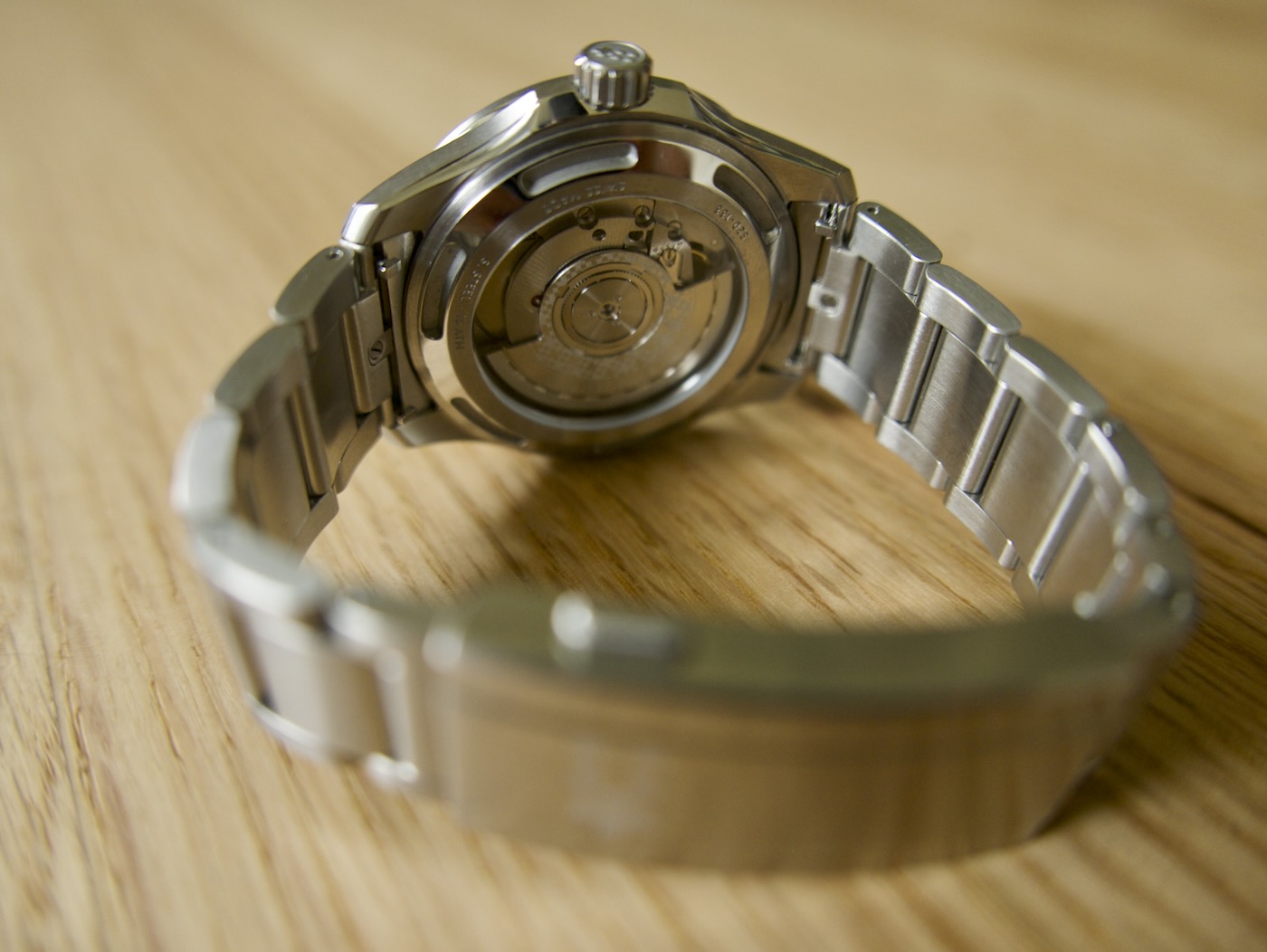 Continuing on the theme of the wearing experience, the Sealander GMT is available with several strap and bracelet options, all equipped with a tool-free quick release. Given that the Sealander GMT is billed as a travel/adventure watch, being able to take a single watch on a trip and easily swap between straps without bringing a spring bar tool (and, God forbid, losing a spring bar) is certainly welcome.
Continuing on the theme of the wearing experience, the Sealander GMT is available with several strap and bracelet options, all equipped with a tool-free quick release. Given that the Sealander GMT is billed as a travel/adventure watch, being able to take a single watch on a trip and easily swap between straps without bringing a spring bar tool (and, God forbid, losing a spring bar) is certainly welcome.
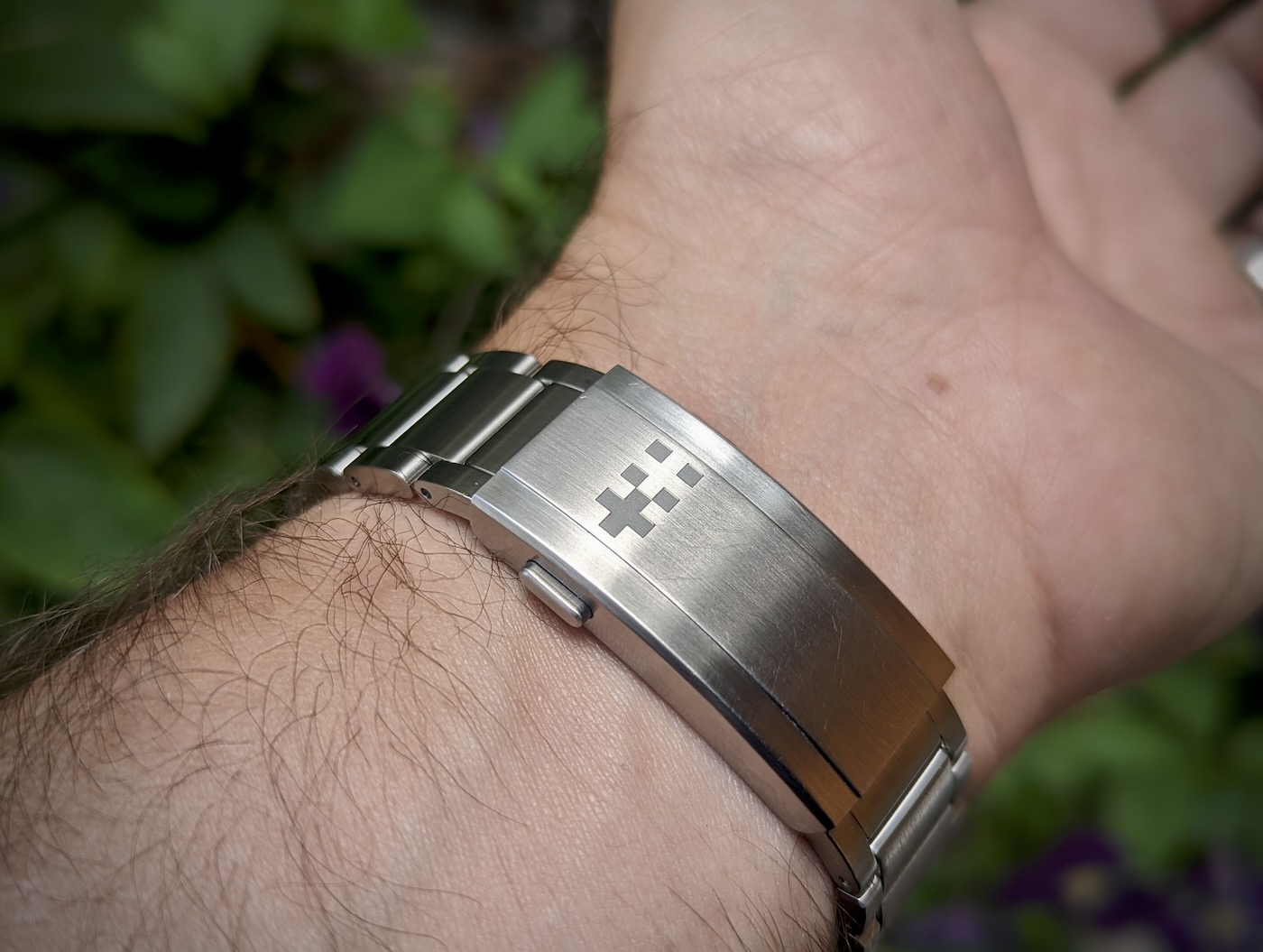
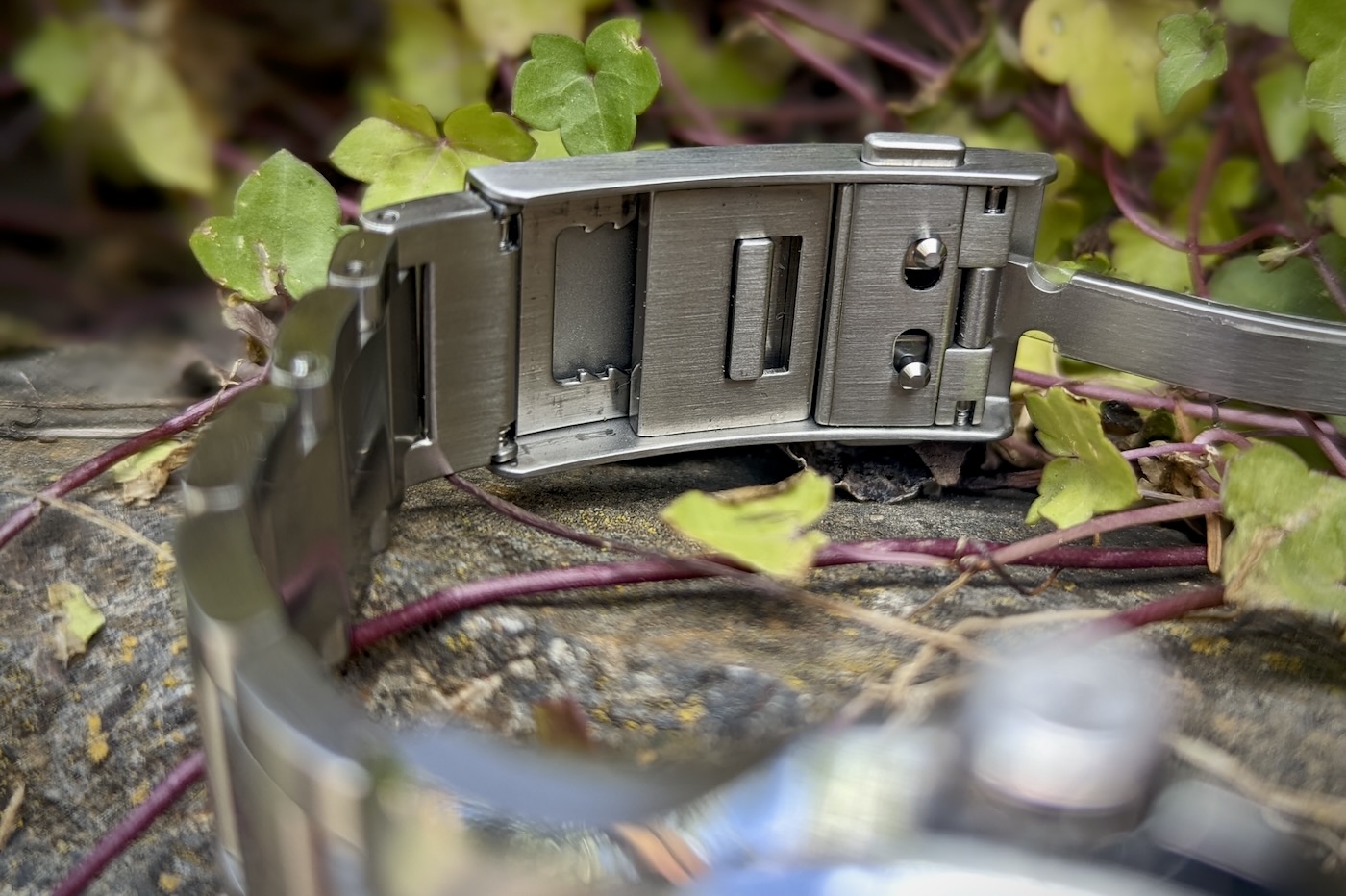 The version we received for review came mounted on a three-link bracelet that is an excellent aesthetic match and, more importantly, wears quite comfortably. The center links are broad and the watch offers nice articulation. Sizing the bracelet is a bit fiddly, as Christopher Ward uses a pin-and-collar system to secure the links. However, the watch comes with two half-links, allowing you to easily center the clasp. Given that most of us don’t change links once we get the bracelet sized, the pin-and-collar system works perfectly fine and there’s no concern about losing screws. The Sealander GMT uses a milled, push-button clasp with an on-the-fly micro-adjust. The clasp is excellent and, once you consider the price point, it’s even more impressive. The only downside is that it makes you wonder why other watches costing considerably more aren’t upping their clasp game.
The version we received for review came mounted on a three-link bracelet that is an excellent aesthetic match and, more importantly, wears quite comfortably. The center links are broad and the watch offers nice articulation. Sizing the bracelet is a bit fiddly, as Christopher Ward uses a pin-and-collar system to secure the links. However, the watch comes with two half-links, allowing you to easily center the clasp. Given that most of us don’t change links once we get the bracelet sized, the pin-and-collar system works perfectly fine and there’s no concern about losing screws. The Sealander GMT uses a milled, push-button clasp with an on-the-fly micro-adjust. The clasp is excellent and, once you consider the price point, it’s even more impressive. The only downside is that it makes you wonder why other watches costing considerably more aren’t upping their clasp game.
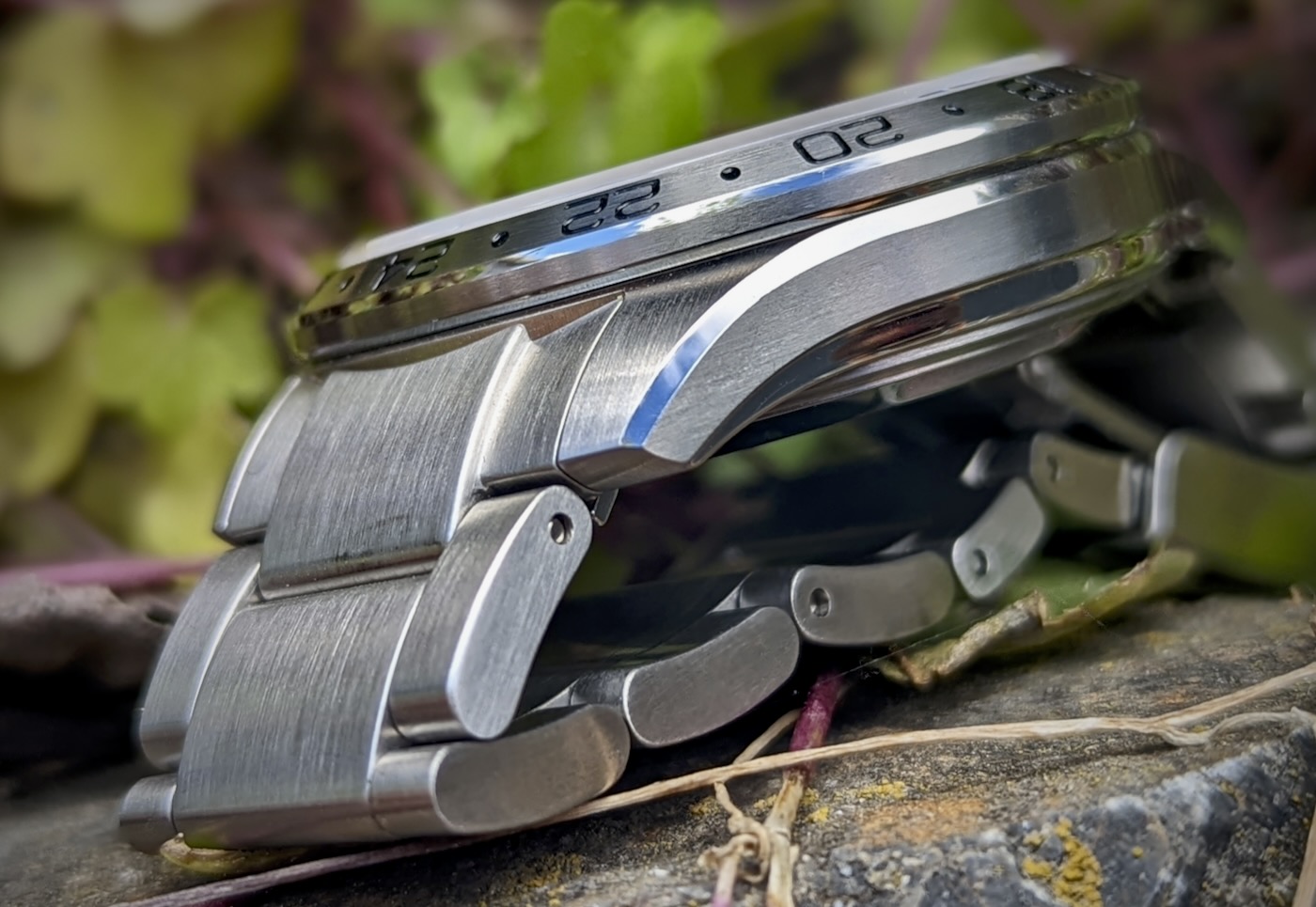 Powering the Christopher Ward C63 Sealander GMT is the Sellita SW 330-2, doppelgänger of the ETA 2893. The Sellita SW 330-2 beats at 28.8kbph, sports 25 jewels and has an extended power reserve of 56 hours. The Sellita SW 330-2 is an “office” GMT movement rather than a “true” GMT. In other words, in the SW 330-2, the GMT hand is controlled by the hour hand, meaning that when you land in a new city and move the hour hand forward, the GMT hand advances right along with the hour hand. You then have to take the additional step of advancing the GMT hand to the correct time. In contrast, in a true GMT, the local (12-hour) time is advanced in jumps by the crown (or pushers), while the 24-hour hand continues to track your home time. If you’re not familiar with the difference, your best bet is to watch a demonstration video on YouTube. The general thinking is that true GMTs are most useful if you’re traveling and need to frequently change the local time while keeping track of home time. On the other hand, office GMTs are most useful for those keeping track of different time zones with the GMT hand (e.g., if you’re working with colleagues in different time zones). Ultimately, both types do the same thing, it just comes down to whether you mind the extra 30 seconds or so it takes to set the time one way or the other. Plus, if you have a large collection of watches and frequently rotate the watches you wear, the office GMT allows you to quick-set the date rather than cycling the local hour hand.
Powering the Christopher Ward C63 Sealander GMT is the Sellita SW 330-2, doppelgänger of the ETA 2893. The Sellita SW 330-2 beats at 28.8kbph, sports 25 jewels and has an extended power reserve of 56 hours. The Sellita SW 330-2 is an “office” GMT movement rather than a “true” GMT. In other words, in the SW 330-2, the GMT hand is controlled by the hour hand, meaning that when you land in a new city and move the hour hand forward, the GMT hand advances right along with the hour hand. You then have to take the additional step of advancing the GMT hand to the correct time. In contrast, in a true GMT, the local (12-hour) time is advanced in jumps by the crown (or pushers), while the 24-hour hand continues to track your home time. If you’re not familiar with the difference, your best bet is to watch a demonstration video on YouTube. The general thinking is that true GMTs are most useful if you’re traveling and need to frequently change the local time while keeping track of home time. On the other hand, office GMTs are most useful for those keeping track of different time zones with the GMT hand (e.g., if you’re working with colleagues in different time zones). Ultimately, both types do the same thing, it just comes down to whether you mind the extra 30 seconds or so it takes to set the time one way or the other. Plus, if you have a large collection of watches and frequently rotate the watches you wear, the office GMT allows you to quick-set the date rather than cycling the local hour hand.
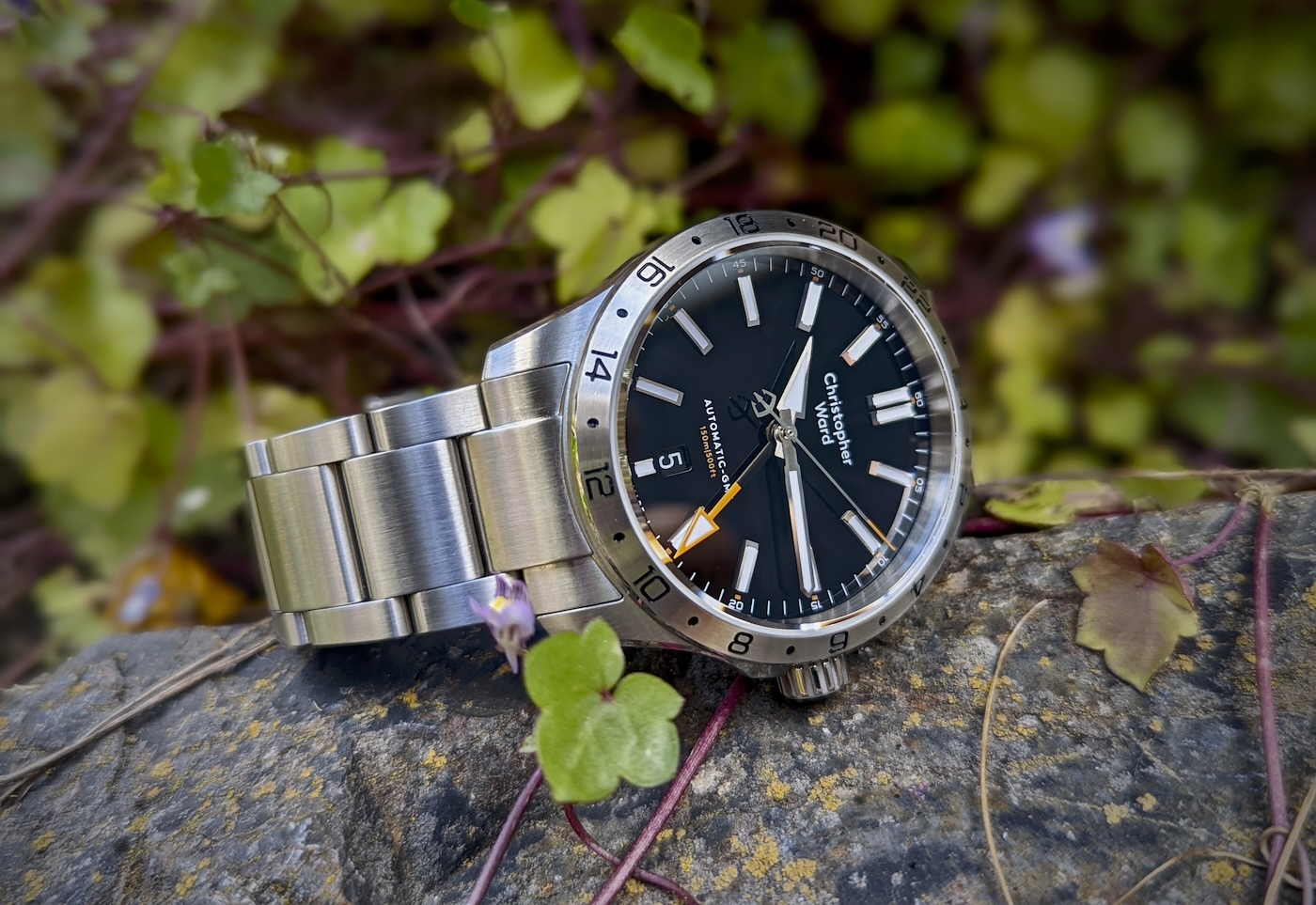
All told, the Christopher Ward C63 Sealander GMT is a comfortable, attractive, and well-executed watch, made all the more impressive by its more-than-reasonable price point of $1,170 USD on bracelet. To learn more about the Christopher Ward C63 Sealander GMT and other Christopher Ward watches, be sure to visit the brand’s website.
Necessary Data
>Brand: Christopher Ward
>Model: C63 Sealander GMT
>Price: $1,170 on bracelet
>Size: 39mm diameter, 45.8mm lug-to-lug, 11.85mm height, 20mm lug width.
>When reviewer would personally wear it: Anytime, but especially when traveling light.
>Friend we’d recommend it to first: Frequent traveler looking for one watch they can wear anytime on their travels.
>Best characteristic of watch: Cohesive design that prioritizes comfort and wearability.
>Worst characteristic of watch: Trident counterweight on seconds hand seems unnecessary outside the dive watch line.

